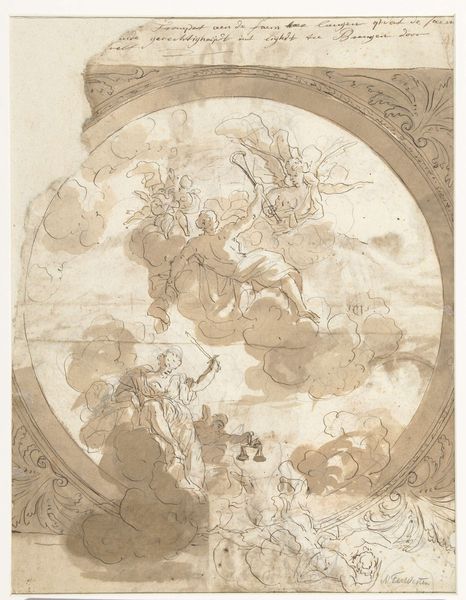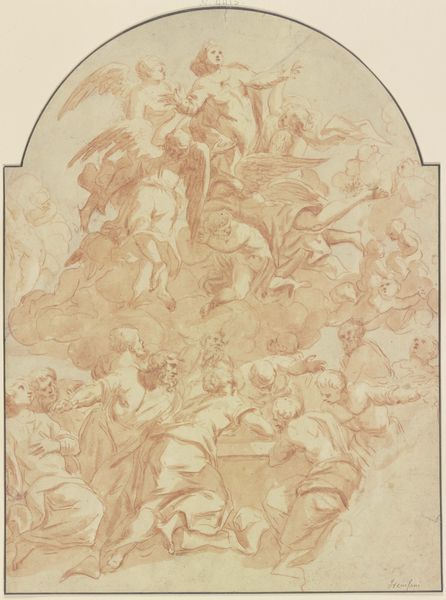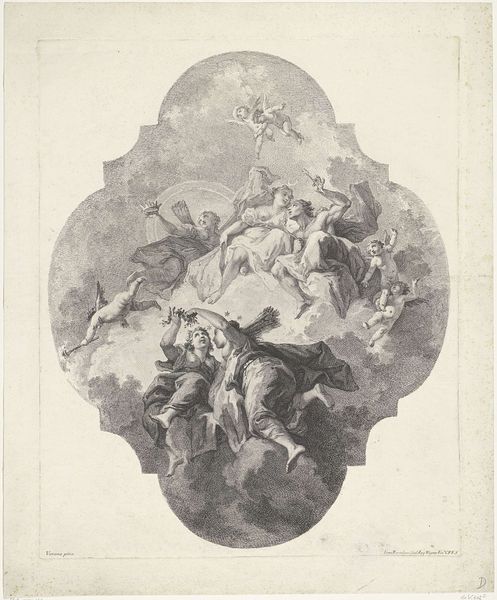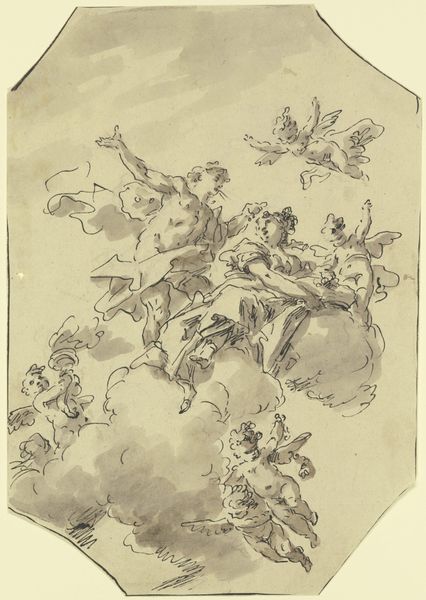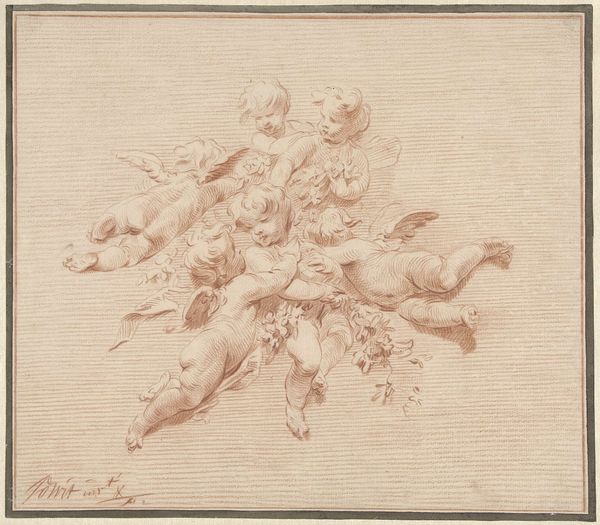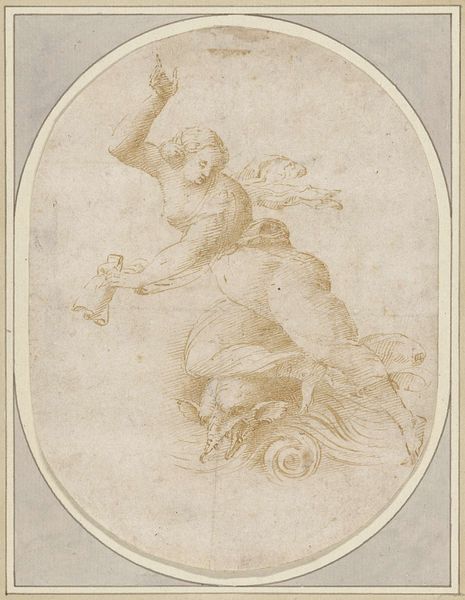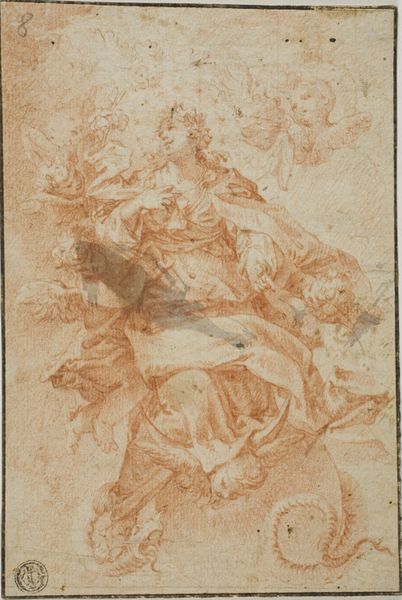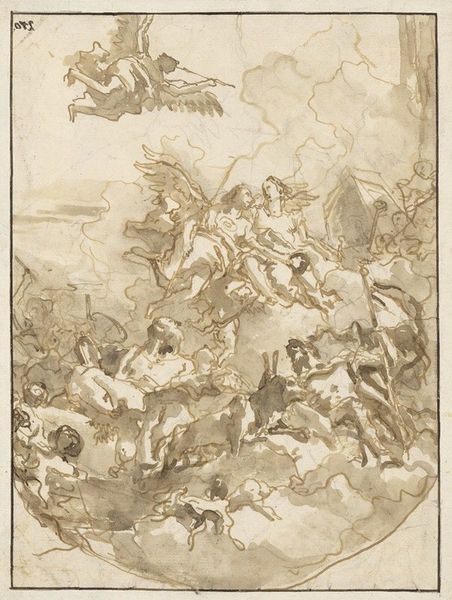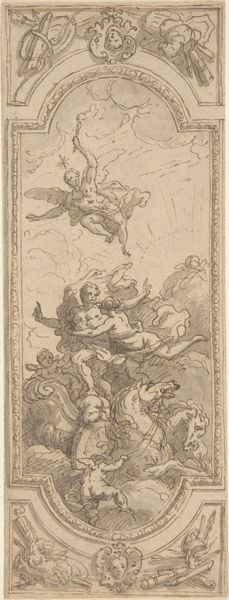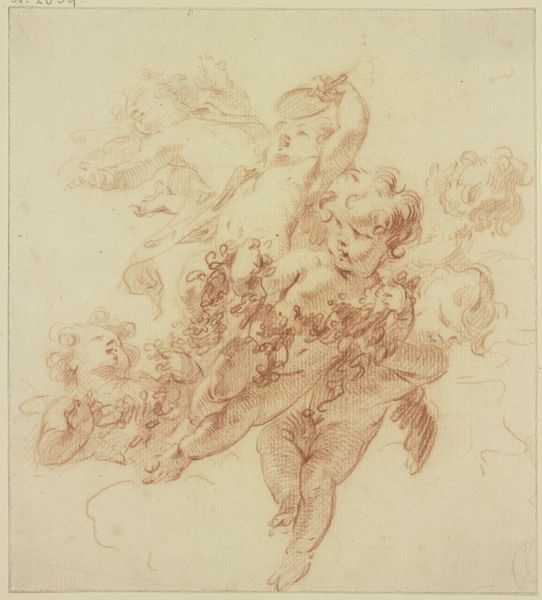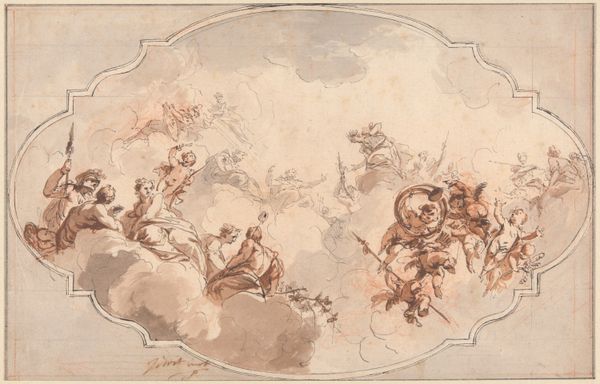
drawing, paper, ink
#
portrait
#
drawing
#
allegory
#
baroque
#
etching
#
figuration
#
paper
#
ink
#
line
#
cityscape
#
history-painting
Dimensions: height 472 mm, width 411 mm
Copyright: Rijks Museum: Open Domain
Editor: So, here we have Jacob de Wit’s "Ontwerp voor plafondschildering met Aurora," dating from sometime between 1705 and 1754. It’s an ink drawing on paper. It feels light and airy, almost like a dream. I’m curious, what’s your interpretation of a work like this? Curator: This piece provides a fascinating insight into the function of art within Baroque society. These ceiling paintings weren't simply decorative; they were often allegorical pronouncements of power, status, and perhaps even idealized narratives that the patrons wished to project. Editor: Interesting, so you are saying it is more than decoration. Curator: Exactly. Think about where this would be seen—likely in a grand home. What message does depicting Aurora, goddess of dawn, surrounded by putti, send to visitors? It's about ushering in enlightenment, a new era under the patronage of the family. Also the Baroque style with its flourishes serves that role to present power and authority. Editor: So it's like visual propaganda? A constructed narrative. Curator: You've hit upon a key aspect. Baroque art, particularly in the homes of the wealthy, acted as a visual manifestation of their self-image and aspirations, impacting the experience of everyone encountering it. Even the use of ink and paper, materials connected with documentation, suggests that this Baroque show of wealth sought validation, perhaps needing its record kept through this drawing. Editor: That gives me a lot to think about, viewing what I thought was “beautiful” in this period as serving the status quo. Thanks! Curator: Precisely! It reveals how deeply art is intertwined with the societal forces shaping its creation and reception. It’s not just about beauty, it’s about power, narrative, and who controls those narratives.
Comments
No comments
Be the first to comment and join the conversation on the ultimate creative platform.
